- Home
- TV History
- Network Studios History
- Cameras
- Archives
- Viewseum
- About / Comments
Skip to content
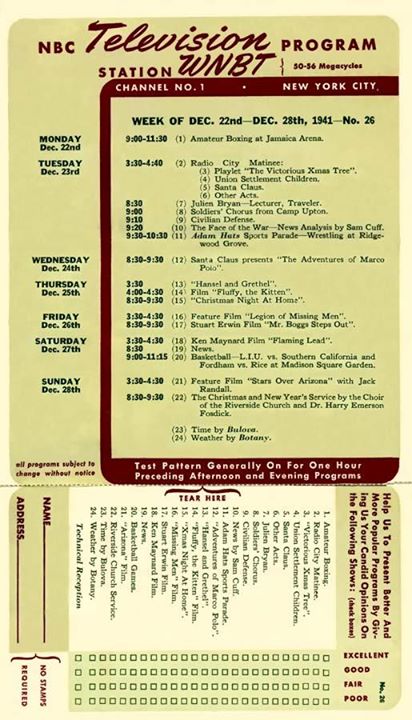

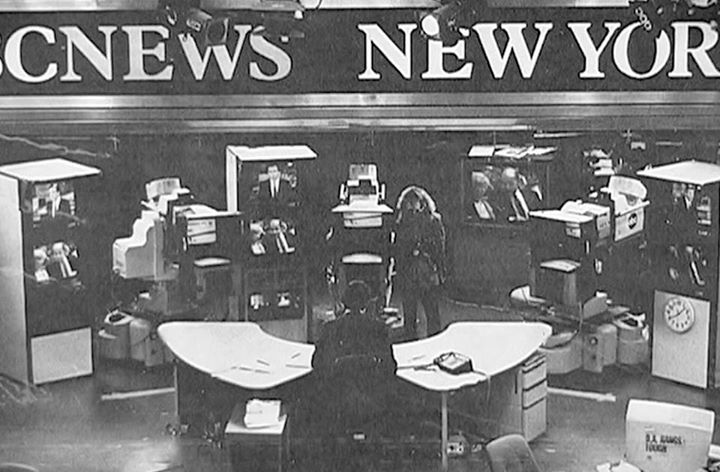

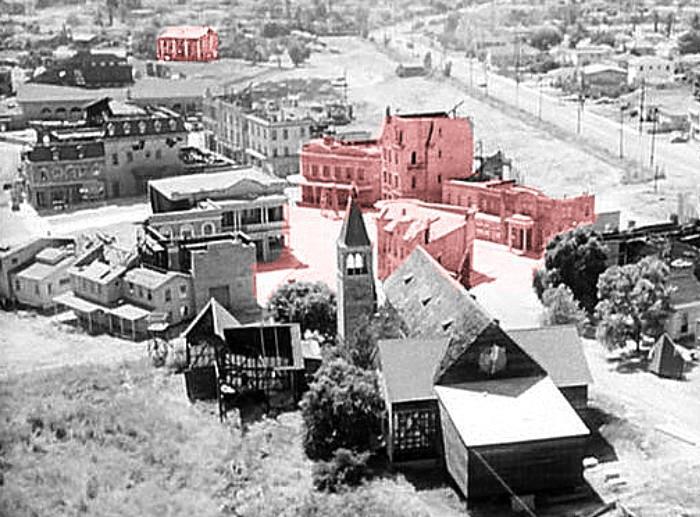

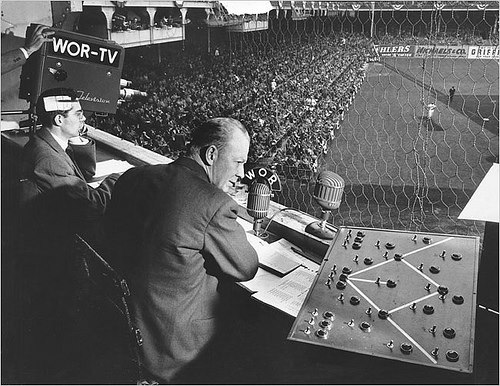

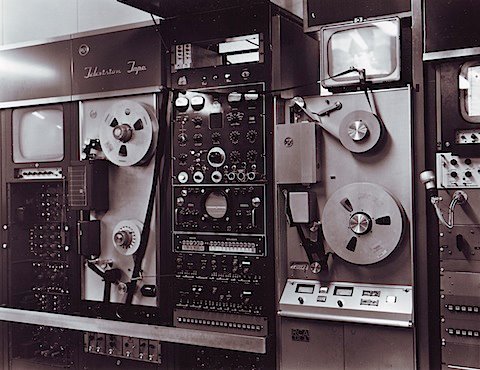

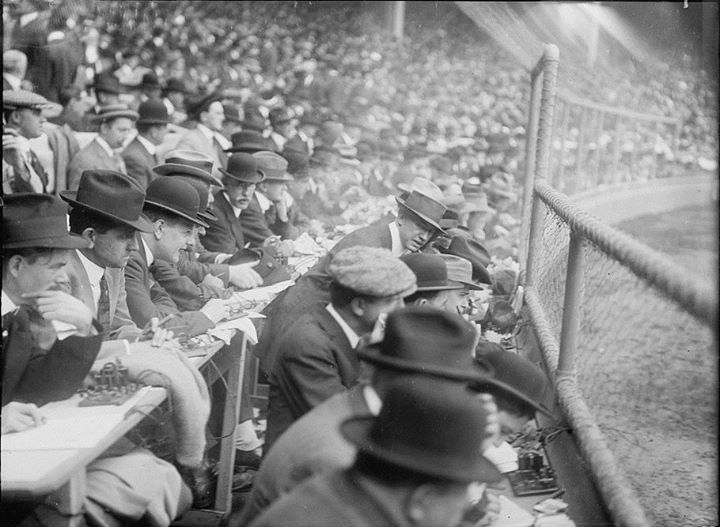



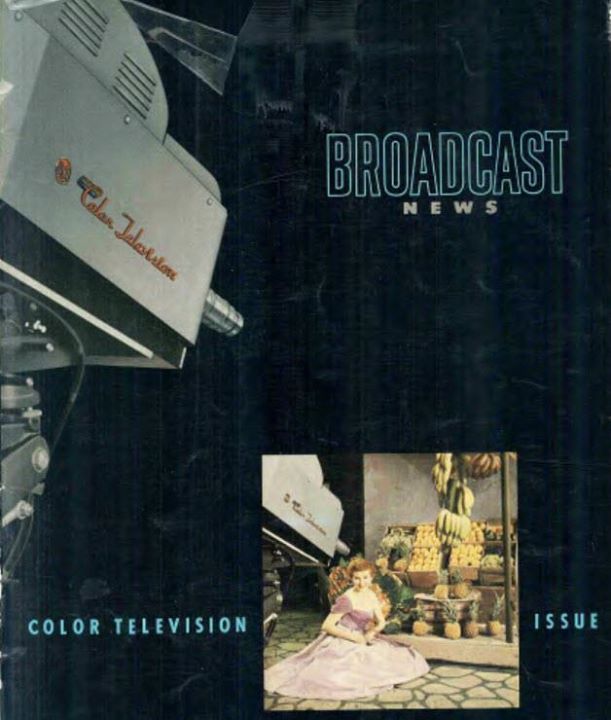

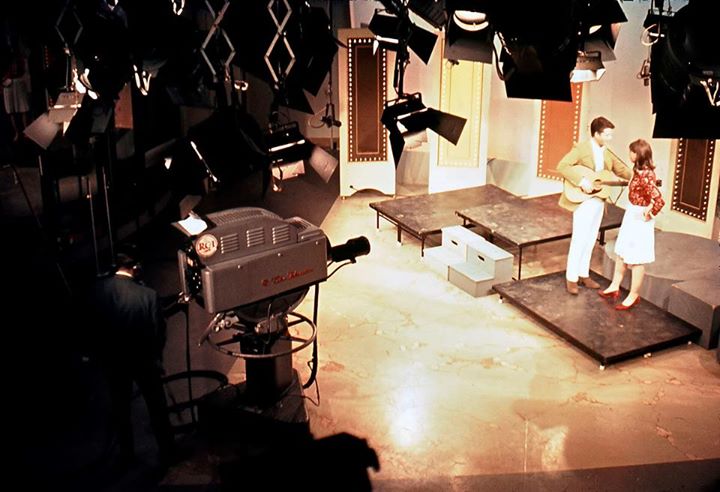

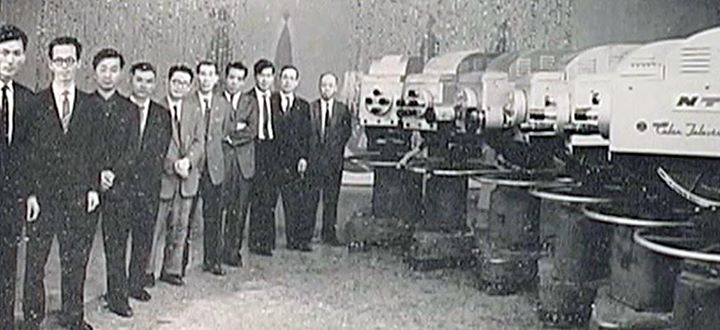

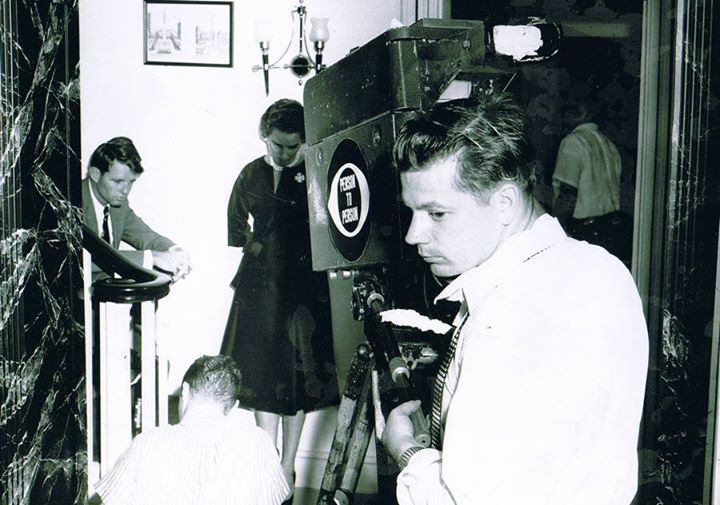

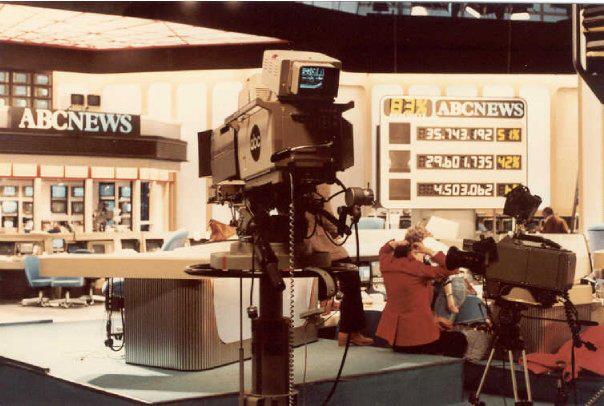



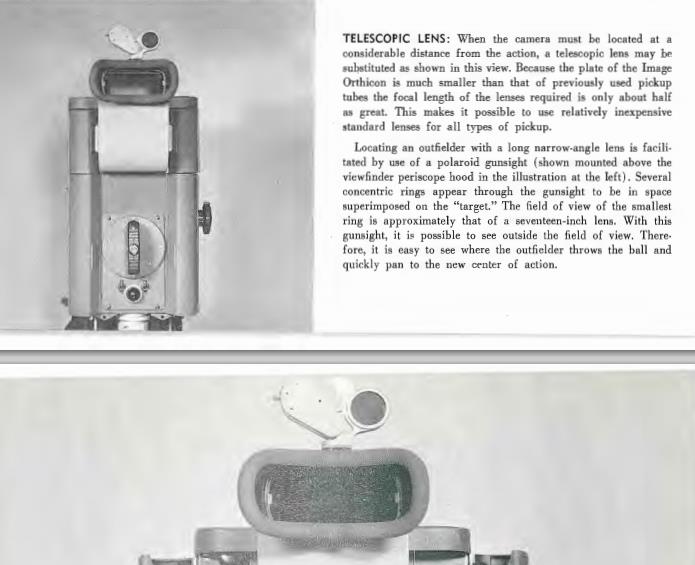

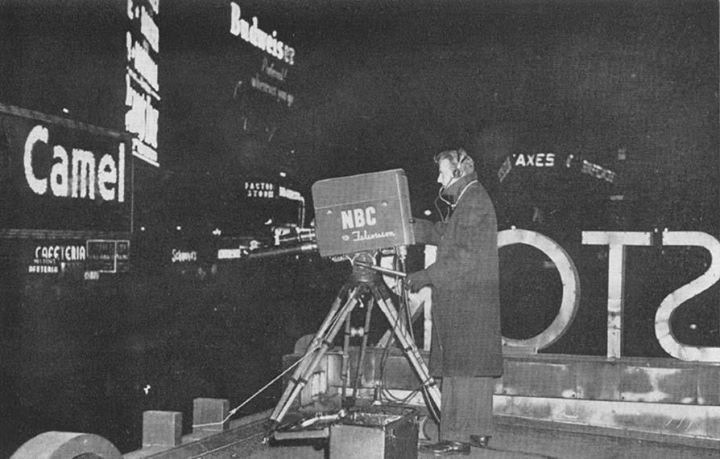

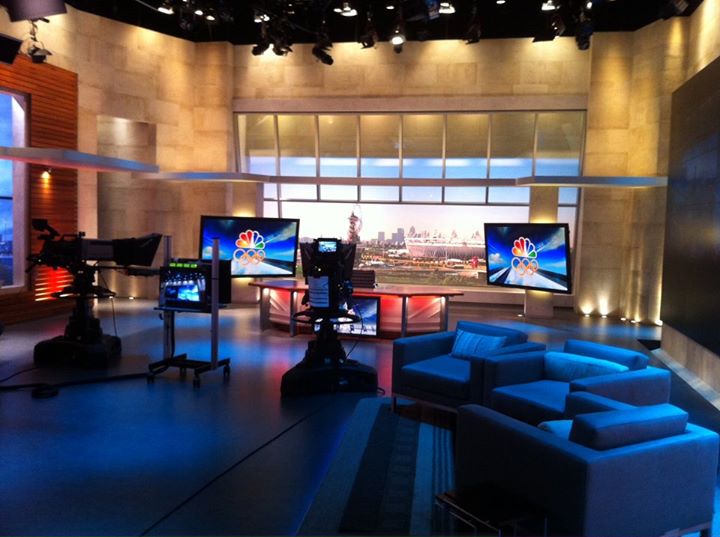

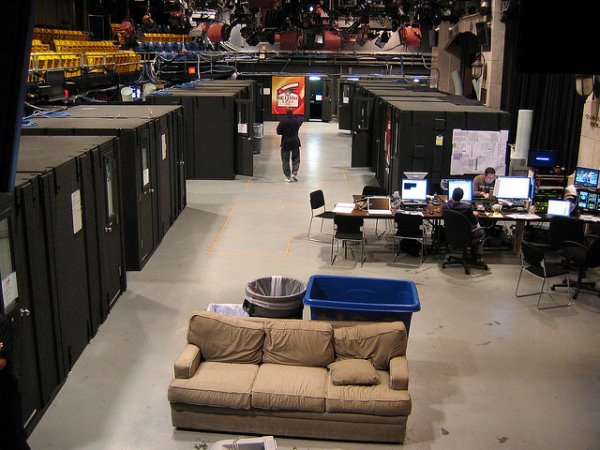

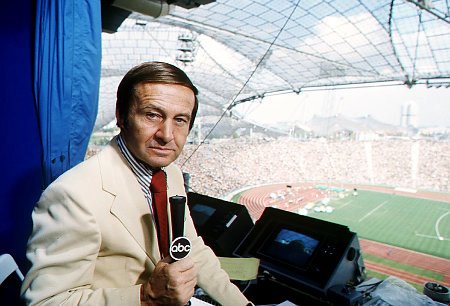

Posts in Category: TV History
Page 132 of 136
« Previous
1
2
3
4
5
6
7
8
9
10
11
12
13
14
15
16
17
18
19
20
21
22
23
24
25
26
27
28
29
30
31
32
33
34
35
36
37
38
39
40
41
42
43
44
45
46
47
48
49
50
51
52
53
54
55
56
57
58
59
60
61
62
63
64
65
66
67
68
69
70
71
72
73
74
75
76
77
78
79
80
81
82
83
84
85
86
87
88
89
90
91
92
93
94
95
96
97
98
99
100
101
102
103
104
105
106
107
108
109
110
111
112
113
114
115
116
117
118
119
120
121
122
123
124
125
126
127
128
129
130
131
132
133
134
135
136
Next » WNBT (NBC), December 1941 – Part B
On September 4, 2012
- TV History
WNBT (NBC), December 1941 – Part B
Just 2 weeks before this, Japan bombed Pearl Harbor and we were at war with Germany, Italy and Japan. Even this meager schedule of programming would basically go to nothing in the next few years as production of home receivers was replaced by radar and radio equipment manufacturing.
Surprise, Surprise! Who knew that ABC had robotic cameras this early?
On September 3, 2012
- TV History
Surprise, Surprise!
Who knew that ABC had robotic cameras this early? The cameras I think are Ikegami HK 312E models, or another early Iki, so this would be in the late 80s maybe. The center camera is on a Fulmar ped and there’s a human running it, but the other two…well, I’m just amazed at how big the robotics are, and the fact that they’re in use on the Evening News with Peter Jennings.
After seeing this post, Kevin Magee, former executive producer of ABC’s Good Morning America, told us this is Mike Schneider doing the 8 AM news cut-in on GMA and Mr. Schneider has been good enough to confirm that this is him on the set in studio TV 3 in 1989. These peds were made by Radamec/ECO and Vinten and in the US, sold by Listec.
Who Knew Atlanta, GA and Mayberry, NC were so close?
On September 3, 2012
- TV History
Who Knew Atlanta, GA and Mayberry, NC were so close?
Below in pink, you see Tara from ‘Gone With The Wind’ and under it, the Mayberry set for the ‘Andy Griffith Show’ on the ‘Back Forty’.
Forty Acres was a film studio backlot that belonged to RKO Pictures and later Desilu Productions, located in Culver City, and is best known as Forty Acres, or “the back forty”. It had other names such as “Desilu Culver”, the “RKO backlot” and “Pathé 40 Acre Ranch” depending on which studio owned the property at the time.
For nearly fifty years it was famous for its outdoor full-scale sets such as Western Street and Atlanta Street or Main Street and was used in films like King Kong (1933) and Gone with the Wind (1939), and television shows like Bonanza and Star Trek. In 1976 it was razed for re-development.
Forty Acres is best remembered for providing the backdrop for the town of Mayberry on the television series The Andy Griffith Show. Many of the street scenes and buildings on the backlot were seen regularly on television screens across America and became quite familiar with viewers. The original Town of Atlanta set, comprising a New York style street, a town square and a residential area to the east, was situated in the center of the property and was used on shows like Adventures of Superman, Ozzie and Harriet, Batman, The Green Hornet, and Mission: Impossible. It was also used on Star Trek in three episodes entitled “Miri”, “The Return of the Archons” and “The City on the Edge of Forever”.
The Tara set, which sat on a sloping rise at the north western corner of the property, was torn down in 1959 to eventually become the Stalag 13 set for Hogan’s Heroes. Most of the sets, which included Camp Henderson on Gomer Pyle, were situated primarily in the center, south and west end of the property.
This is Red Barber with something few have ever seen…
On September 3, 2012
- TV History
INCREDIBLY RARE PHOTO!
This is Red Barber with something few have ever seen before. Of Red’s own invention, this panel is connected to the WOR-TV remote truck and shows the director areas of the field Red wants to comment on. This gives the director a heads up so he can get a camera on the position in advance and gives Red’s ‘color commentary’ video support. He’s not trying to direct the play by play action, but as a single announcer, wanted a bit of extra help when he told stories about the Brooklyn Dodgers or noticed things the guys in the truck could not see.
For instance, home plate has 3 lights, operated by toggle switches. If a left handed batter is up, Red would let him know by flipping the left switch so the director can get the best shot. If he wanted to tell the director to watch the catcher, he would use the center light. There were also combinations of lights that signaled that he wanted a shot of people in the stands. Very Cool!
FYI, in 1939, Red was the announcer on the first ever television broadcast of a major league baseball game. Here is Mr. Barber’s baseball announcer affiliations…Cincinnati Reds 1934-1939, Brooklyn Dodgers 1939-1953, New York Yankees 1954-1966.
State Of The Art: Video Tape Delay
On September 3, 2012
- TV History
State Of The Art: Video Tape Delay
Until sometime in the mid to late 60s, this is the way you got a 6 second delay for live television events. In this photo, you would have recorded on the left machine, thread the tape over a few homemade spendels and play it back on the machine on the right for air. In case of bloopers, cut to live action before the image gets to the playback head and pray there are no more till you can get to a station break and re sync.
1913: State Of The Art Sports Reporting
On September 3, 2012
- TV History
1913: State Of The Art Sports Reporting
Check out these two long rows of telegraph operators and reporters. That’s how the 1913 World Series was covered from The Polo Grounds in NYC. The series pitted the New York Giants against the Philadelphia Athletics.
(NY Giants became the SF Giants in 1957)


The Great, Van Cliburn
On September 2, 2012
- TV History
In 2005, I had the pleasure of spending some time with Van Cliburn, who was a frequent guest of a good friend of mine in Miami. Although his background is classical, he’s very down to earth and can tell some great jokes. I had heard his name since I was a kid, and frankly, to my ear, it seemed everyone called him ‘Vancliburn’. I remember thinking it odd that he had a one word name like ‘Liberace’, but figured it was some ‘piano thing’. There is some sad news below.
The only classical pianist who has received a ticker-tape parade in New York City, Van Cliburn has announced through his publicist that he has been diagnosed with advanced bone cancer. Van passed away in 2013.
Raised in Texas and educated at Juilliard, Harvey Lavan “Van” Cliburn earned global fame at age 23 when he won the first International Tchaikovsky Piano Competition in Moscow in 1958, which occurred at the height of the Cold War.
Cliburn performed Rachmaninoff’s Piano Concerto No. 3 and Tchaikovsky’s Piano Concerto No. 1, and his later recording of the latter was the first classical recording to sell 1 million copies and eventually went triple-platinum.
Cliburn eventually gave his name to the quadrennial Van Cliburn International Piano Competition in 1962, and despite retiring in 1978 he has performed for every American president since Harry Truman. Cliburn received the Kennedy Center Honors in 2001 and the Grammy Lifetime Achievement Award in 2004.
I have fond memories of an evening with him and he was not at all haughty or snobbish. To the contrary, he was telling me about the hail storm at his home in Texas a few days back, and the damage it did to his new car which was so sever, his insurance company called the car irreparable and was going to replace it with another new one.
RCA Color Television: January 1954
On August 31, 2012
- TV History
RCA Color Television: January 1954
In this special issue of RCA Broadcast News, everything you always wanted to know about early color TV, and more is here. Color cameras, film, lighting, transmission…all of it. From the highly technical to the simple stuff, it’s all covered in this issue. Enjoy!
New York Worlds Fair: Summer 1964
On August 30, 2012
- TV History
New York Worlds Fair: Summer 1964
I remember visiting the RCA Exhibit and the how much I hated leaving it. I was 13 and my parents had to threaten me to get me out of there. This singing duo was there along with a guy playing an electronic accordion. Sprite had a brand new commercial running that had the same kind of new, electronic keyboard sounds that were coming our of his instrument. I think there were only 2 TK41s there, but I looked at every inch of both of them. I was fascinated by all of it.


RCA Color Comes To Japan: 1957
On August 29, 2012
- TV History
Color Comes To Japan: 1957
On Sunday, I had a story about Expo ’58 and the RCA color exhibit at the Brussels’ World’s Fair. In it, I also mentioned that RCA had sent a mobile color unit to Japan in 1957 to give them a first look at color television and here is the other part of that story. The Japanese were impressed and within a year of the visit, these 5 RCA TK41s arrived at Nippon Broadcasting.
CLASSIC: ‘Person To Person’
On August 29, 2012
- TV History
CLASSIC: ‘Person To Person’ History
Above, cameraman Norm Hannin (who looks a lot like David Brinkley) prepares his specially branded TK30 for a live interview at the home of Bobby and Ethyl Kennedy. Notice the cut out on the bottom of the viewfinder hood. Good idea.
‘Person to Person’ ran from 1953 to 1961 and all the segments were live. The moves were rehearsed and questions were scripted but not strictly scripted so adlibs and surprises from guests did happen. Edward R. Murrow hosted it until 1959, interviewing celebrities in their homes from a comfortable chair in his New York studio. In the last two years of its original run, Charles Collingwood took over as host.
Although Murrow is best remembered as a reporter on programs such as ‘Hear It Now’ and ‘See It Now’ and for publicly confronting Senator Joseph McCarthy, on ‘Person to Person’ he was a pioneer of the celebrity interview.
The program was well planned, with as many as six cameras and TV lighting installed to cover the guest’s moves through his home, and a microwave link to transmit the signals back to the network. The guests wore wireless microphones to pick up their voices as they moved around the home or its grounds. Each episode had two live guests each week and the two 13 minute interviews in each program were typically with very different types of people, such as a movie star and a scientist.
Murrow wanted the series “in spite of television,” to “revive the art of conversation”. This was an historical step to building the cult of the personality on television. The personalities were divided into two camps, with the entertainment and sports figures in one, and the second containing all others, including artists, writers, politicians, lawyers, scientists, and industrialists.
Reagan, Carter, Anderson
On August 28, 2012
- TV History
Reagan, Carter, Anderson
This is election night, 1980 at ABC New York. The big camera is an Ikegami HK 312E with the big Triax box on it’s right side. The ENG camera may be an Ikegami 77, but I’m not sure. Do you know?


August 27, 1968…44 Years Ago Today, Dan Rather Manhandled In Chicago
On August 27, 2012
- TV History
August 27, 1968…44 Years Ago Today
Dan Rather was manhandled at the Democratic National Convention in Chicago. Classic footage of a well remembered event.
For more presidential election videos go to electionwall.org
RCA TK30 ‘Gun site’
On August 27, 2012
- TV History
RCA TK30 ‘Gun site’
This is a screen capture from an introductory article on the RCA TK30 from RCA Broadcast News in 1946. Here we have an explanation of the mysterious gun sight that attached to the top of the viewfinder hood. I think there were two types…this one with a polarized lens and a very simple, slotted metal version that looked like Mickey Mouse ears set very close together.
New Year’s Eve At Times Square: A History Lesson
On August 27, 2012
- TV History
New Year’s Eve At Times Square: A History Lesson
Here’s a brand spanking new RCA TK30 above the entrance to the Hotel Astor in Times Square in 1946 shooting the merry makers below. Since the mid 1800s, Trinity Church was the gathering point, but the celebration moved to Times Square in 1904 as part of a promotion of the New York Times to celebrate their new building and headquarters.
New York in 1904 was a city on the verge of tremendous changes – and, not surprisingly, many of those changes had their genesis in the bustling energy and thronged streets of Times Square. Two innovations that would completely transform the Crossroads of the World debuted in 1904: the opening of the city’s first subway line, and the first-ever celebration of New Year’s Eve in Times Square.
The NY Times building was the focus of an unprecedented New Year’s Eve celebration. Alfred Ochs, owner of The Times, spared no expense to ensure a party for the ages. An all-day street festival culminated in a fireworks display set off from the base of the tower, and at midnight the joyful sound of cheering, rattles and noisemakers from the over 200,000 attendees could be heard, it was said, from as far away as Croton-on-Hudson, thirty miles north along the Hudson River.
The New York Times’ description of the occasion paints a rapturous picture: “From base to dome the giant structure was alight – a torch to usher in the newborn year…”
The night was such a rousing success that Times Square instantly replaced Lower Manhattan’s Trinity Church as “the” place in New York City to ring in the New Year. Before long, this party of parties would capture the imagination of the nation, and the world.
Two years later, the city banned the fireworks display – but Ochs was undaunted. He arranged to have a large, illuminated seven-hundred-pound iron and wood ball lowered from the tower flagpole precisely at midnight to signal the end of 1907 and the beginning of 1908. The rest as they say, is history.
TV SHOWS ON THE AIR IN 1960:
On August 26, 2012
- TV History
TV SHOWS ON THE AIR IN 1960:
77 Sunset Strip
Adventures in Paradise (20th Century Fox)
Alfred Hitchcock Presents
Angel
Bachelor Father
Bat Masterson (Ziv)
Bonanza
Bringing Up Buddy (Kayro Prod.)
Bronco (Warner Bros.)
Checkmate (Jamco Prod. / filmed at Universal)
Cheyenne (Warner Bros.)
Dan Raven
Dante
Death Valley Days (filmed at numerous ranches)
Dennis the Menace (CBS)
Dick Powell’s Zane Grey Theater
Father Knows Best (Rodney-Young Productions / Screen Gems)
Guestward, Ho! (Desilu)
Gunsmoke (Arness Prod. / CBS / filmed at several studios & ranches)
Harrigan and Son (Desilu)
Have Gun – Will Travel (CBS / exteriors filmed at numerous ranches)
Hawaiian Eye
Hennessey
Hong Kong
Klondike
Laramie (Revue / filmed at Universal and on several ranches)
Lassie
Lawman (Warner Bros.)
Leave it to Beaver (Gomalco / filmed at Republic & Universal)
Maverick (Warner Bros.)
My Sister Eileen
My Three Sons
Naked City
National Velvet (MGM)
One Step Beyond (ABC Films, filmed at MGM for first two seasons, final season filmed in Great Britain)
Outlaws (NBC / filmed at Bronson Canyon and MGM per IMDB)
Perry Mason (CBS)
Pete and Gladys (CBS / filmed at Paramount)
Peter Gunn (Spartan Productions / filmed at Universal)
Peter Loves Mary
Rawhide (CBS / filmed at MGM, then CBS Studio Center)
Riverboat (Meladare Company / filmed at Universal)
Route 66 (Lancer-Edling Productions / Screen Gems)
Stagecoach West
Sugarfoot (Warner Bros.)
Surfside 6 (Warner Bros.)
Tales of Wells Fargo (Overland Productions / filmed at Universal)
The Adventures of Ozzie and Harriet
The Andy Griffith Show
The Ann Sothern Show
The Aquanauts
The Barbara Stanwyck Show (ESW Productions / filmed at Desilu-Culver)
The Danny Thomas Show
The Deputy (Top Gun Prod. / filmed at Universal)
The Detectives
The Donna Reed Show
The General Electric Theater (MCA / Revue)
The Islanders (MGM)
The Jack Benny Program (CBS)
The Law and Mr. Jones (Four Star Productions)
The Life and Legend of Wyatt Earp (Wyatt Earp Enterprises)
The Loretta Young Show (drama anthology)
The Many Loves of Doby Gillis (20th Century Fox Television)
The Real McCoys
The Red Skelton Show
The Rifleman (Four Star Productions)
The Roaring 20’s (Warner Brothers Television)
The Tab Hunter Show (Famous Artists)
The Tall Man (Lincoln County Prod. / filmed at Universal)
The Twilight Zone (Cayuga Productions / filmed at MGM)
The Untouchables
The Westerner (Four Star Productions)
The Witness
Thriller
To Tell The Truth
Wagon Train (Revue / Universal)
Wanted: Dead or Alive (CBS / Four Star)
London: THIS JUST IN! From the International Broadcast Center
On August 1, 2012
- TV History
London: THIS JUST IN!
From the International Broadcast Center at the 2012 Summer Olympics, here is NBC’s Daytime Studio. Hosts from this location are Al Michaels and Dan Patrick. Thanks to Todd Palladino who runs one of these cameras for sending this first look at the homebase set. Hopefully, more to follow soon.
London Olympics Coverage…From Studio 8H
On July 31, 2012
- TV History
London Olympics Coverage…From Studio 8H
This is where most of the commentary marries the video…on the floor of Studio 8H at 30 Rock. With SNL on summer break, the studio is transformed to the Announce Center. Each of these eight or so sound proof booths has 2 sides…a small producer’s side and a larger talent side that can accommodate up to three announcers.
The commentators watch the live feed and with the help of producers on each end, give us the ‘play by play’ on each event. This is really an ingenious system and the photo below is actually from the 08 Summer games in China when NBC used the same set up. I don’t know how far back this off site system goes, but would like to hear from those that have ‘been there and done that’.
Jim McKay on NBC? CBS Too?Actually, Yes!
On July 30, 2012
- TV History
Jim McKay on NBC? CBS Too?
Actually, yes! With the Olympics upon us, I thought you may like to know that NBC was classy enough to include Jim McKay three times in it’s Olympics coverage over the years. In 2002, ABC “loaned” McKay to NBC to serve as a special correspondent during the Winter Olympic Games in Salt Lake City. The NBC broadcast of the 2008 Summer Olympics opening ceremony was dedicated to McKay, per a message at the closing of the broadcast. NBC also dedicated the 2010 Winter Olympics opening ceremony to him.
Although Jim was with ABC for 37 years, he has covered the Olympics 12 times for all three networks starting with the 1960 Summer games from Rome, which he anchored for CBS from the Grand Central Terminal studios. Gone, but not forgotten. Thanks Jim!
Page 132 of 136
« Previous
1
2
3
4
5
6
7
8
9
10
11
12
13
14
15
16
17
18
19
20
21
22
23
24
25
26
27
28
29
30
31
32
33
34
35
36
37
38
39
40
41
42
43
44
45
46
47
48
49
50
51
52
53
54
55
56
57
58
59
60
61
62
63
64
65
66
67
68
69
70
71
72
73
74
75
76
77
78
79
80
81
82
83
84
85
86
87
88
89
90
91
92
93
94
95
96
97
98
99
100
101
102
103
104
105
106
107
108
109
110
111
112
113
114
115
116
117
118
119
120
121
122
123
124
125
126
127
128
129
130
131
132
133
134
135
136
Next »